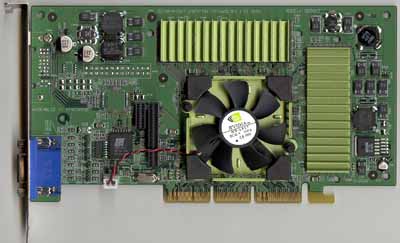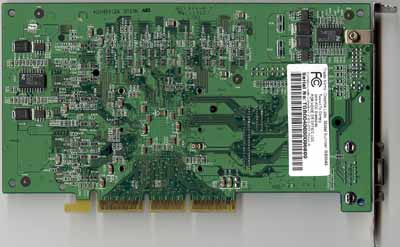
Original Link: https://www.anandtech.com/show/643
Creative Labs Annihilator2 Ultra 64MB GeForce2 Ultra
by Anand Lal Shimpi on October 26, 2000 1:25 AM EST- Posted in
- GPUs
Introduction
 After
paying Creative Labs an impromptu visit back in August we were left with a very
interesting take on the situation surrounding NVIDIA’s GeForce2 Ultra solution
and the cards that would be based around it. At that time, Creative Labs was
on track to produce the first cards based on the GeForce2 Ultra and would thus
enjoy a retail availability lead of a few weeks over the competition.
After
paying Creative Labs an impromptu visit back in August we were left with a very
interesting take on the situation surrounding NVIDIA’s GeForce2 Ultra solution
and the cards that would be based around it. At that time, Creative Labs was
on track to produce the first cards based on the GeForce2 Ultra and would thus
enjoy a retail availability lead of a few weeks over the competition.
In spite of this, Creative Labs expressed complaints about the cost of producing the boards, however, surprisingly enough, it wasn’t the extremely high speed memory or hand picked GeForce2 cores that garnered the highest complaints. Instead, it was the cost of the various power components, capacitors, resistors, etc… on the board that Creative Labs seemed to have issues with when it came down to final board cost.
While that was the first and last time we ever heard of such a complaint from a video card manufacturer, it is worthy to note that the situation has changed somewhat since then. Instead of Creative Labs holding an exclusive lead in terms of shipping GeForce2 Ultra based boards, they have seen delays that have now positioned their Annihilator2 Ultra card as being released around the same time as ELSA’s GLADIAC ULTRA which we reviewed just under two weeks ago.
Without the exclusive availability of their cards for a period of time before other competing manufacturers could join in, and without the ability to undercut the competition too much in price as they did with the GeForce2 GTS based Annihilator2, Creative Labs had very little to differentiate their Ultra based board from soon to be arriving competing solutions. However one thing that Creative Labs hasn’t had to rely on in the past to boost sales were unique features that set them apart from the competition. As the well recognized brand name and overwhelming presence of products in retail stores would lead you to believe, Creative Labs is at a noticeable advantage with their Annihilator2 Ultra, and it may just be the advantage Creative Labs needs to actually sell these expensive little cards.
For features of the GeForce2 Ultra visit our GeForce2 Ultra Review.
The Card
Once again, just as we saw with ELSA’s GeForce2 Ultra solution, the Annihilator2 Ultra is based upon NVIDIA’s reference design. The idea of video card manufacturers using a video chipset manufacturer’s reference design in an actual production card is pretty new, since the reference designs of yesterday left quite a bit to desire. For the end user it’s hard to tell the difference, but for the video card manufacturer the lack of detail present in many of those old reference designs made following them useless. And thus we saw many variations on cards by different manufacturers that all featured the same chipset.
Things have since changed and it’s now very commonplace for video card manufacturers to follow NVIDIA’s design unless they are implementing some features that aren’t provided for in the reference design. It’s much easier this way for the manufacturer to crank out a card based on a newly released chipset as it saves a lot of the time that would otherwise be devoted to creating a new design from scratch. Which makes Creative Labs’ decision pretty sensible.
However, at least according to Creative Labs, the card design process isn’t as simple as following the reference design and producing cards. Instead Creative Labs implements a rigorous testing procedure in which they put NVIDIA’s reference design to the test just to make sure that the design is sufficient for their needs. While in most cases this level of quality control isn’t necessary, for Creative Labs, it’s most definitely necessary when you’re dealing with the extremely large volume of cards that they ship. You won’t see any reliability issues with these cards as you would with some of the smaller manufacturers that don’t implement such extensive testing methods, however the likelihood that you’d run into such a problem with any card based on NVIDIA’s reference design is very low.
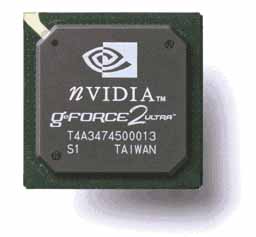 The
heart of the Annihilator2 Ultra is its 0.18-micron GeForce2 Ultra core which
is clocked at 250MHz, a full 25% higher than the regular GeForce2 GTS. In order
to maintain a GeForce2 Ultra production line, NVIDIA only selects the highest
quality GeForce2 parts to be labeled as an Ultra. As we saw in our July 2000
GeForce2 GTS Roundup, only half of the cards hit a 250MHz core clock, and none
of them managed to go even 5MHz higher. Most GeForce2 GTS parts seem to be
happy in the 225 – 235MHz range with regular cooling, but this means that NVIDIA
has to work fairly hard to get an Ultra part out of the bin. Of course, as
time goes on, yields do improve so there are most likely more GeForce2 GTS’
hitting 250MHz now than there were last July, but you get the point; in order
to hit 250MHz, much more than just increasing the clock on the chip is necessary.
The
heart of the Annihilator2 Ultra is its 0.18-micron GeForce2 Ultra core which
is clocked at 250MHz, a full 25% higher than the regular GeForce2 GTS. In order
to maintain a GeForce2 Ultra production line, NVIDIA only selects the highest
quality GeForce2 parts to be labeled as an Ultra. As we saw in our July 2000
GeForce2 GTS Roundup, only half of the cards hit a 250MHz core clock, and none
of them managed to go even 5MHz higher. Most GeForce2 GTS parts seem to be
happy in the 225 – 235MHz range with regular cooling, but this means that NVIDIA
has to work fairly hard to get an Ultra part out of the bin. Of course, as
time goes on, yields do improve so there are most likely more GeForce2 GTS’
hitting 250MHz now than there were last July, but you get the point; in order
to hit 250MHz, much more than just increasing the clock on the chip is necessary.
Part of those heightened requirements is the use of a larger heatsink with a more powerful fan which allows to keep the chip running cool and reliable. From what we’ve seen, most GeForce2 GTS based cards run at about 124F (temperature taken from the back of the PCB directly behind the core), and as you can probably imagine, using conventional cooling methods a 25% higher clocked chip would definitely produce quite a bit more heat. The solution was obvious, use a larger heatsink.
NVIDIA’s reference design called for an above average sized unit, which you can see in the picture below, however when we received ELSA’s GLADIAC ULTRA we noticed that they had implemented a different heatsink/fan. Let’s take a look at an excerpt from that review:
“In cooling this high clocked core, ELSA implemented an even larger heatsink/fan combo than what we saw on the reference Ultra board we received from NVIDIA in August. The heatsink measures 2” x 2” (5.08 cm x 5.08 cm), while the reference design heatsink was approximately 2.25” x 1.75”. The resulting surface area of the heatsink on the GLADIAC ULTRA is about 2% larger than what was present on the reference board, but that alone shouldn’t provide for a dramatic increase in cooling efficiency.
However, ELSA has also implemented a larger fan to go along with this larger heatsink. Instead of the 10 finned fan that spanned a diameter of 1.5” as we noticed on the reference board, ELSA implemented a fan with 7 larger fins and a full 2” diameter to aid in cooling the Ultra’s core. The two fans appear to spin at the same rate, meaning that ELSA’s fan should be effectively a better cooler than what we saw on the reference boards. “
Creative
Labs Annihilator2 Ultra/ELSA GLADIAC ULTRA
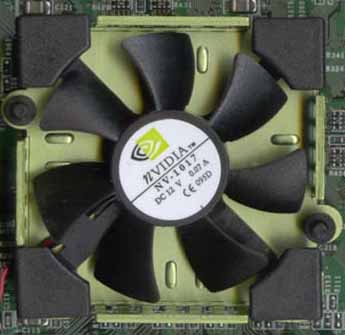
GeForce2
Ultra Reference Design
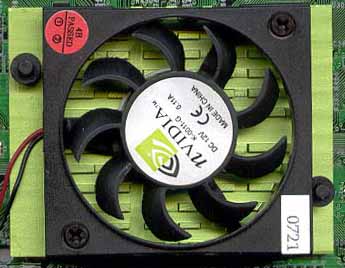
Upon further inspection, first noticed by AnandTech’s new Consumer Graphics Editor, Vlad Trishkin, the new fan, which is also used by Creative Labs actually draws less current than the one we saw on the reference board back in August. Both fans operate are rated at 12V, however the original reference design featured a 0.11A fan while the new fan is rated at 0.07 amps. This is over a 60% reduction in current, which should also translate into a slightly slower rotational speed for the new fan. However, since the fan is physically larger than the one we saw on the reference design, it should all balance out in the end.
|
Reference
Fan
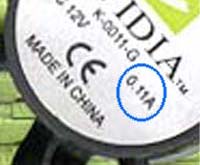 |
Creative
Labs/ELSA Fan
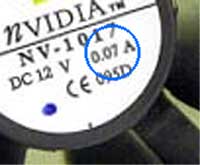 |
Once again, the heatsink is attached to the GeForce2 Ultra core using thermal glue, which isn’t the best way to enhance heat conductivity however it is one of the easiest ways to do so on a production line without requiring human intervention.
The Annihilator2 Ultra features the same two heatsinks across the board’s memory chips that we’ve seen on both the original GeForce2 Ultra reference board and ELSA’s GLADIAC ULTRA. With the memory on the Annihilator2 Ultra running at 460MHz (230MHz DDR), it isn’t surprising to see a need for memory cooling. The heatsinks are attached using thermal glue and get relatively warm during normal operation.
When it comes to features, the Annihilator2 Ultra is nothing but a bare bones GeForce2 Ultra card. The board features no TV-out header, no VIVO features, no 3D glasses and doesn’t come with any sort of a game bundle. This should ideally help to kick the price of the card down a notch, but don’t expect to see it drop too far from the $500 price tag. We have seen stores advertising the Annihilator2 Ultra for around $430 - $460, which is under the $480 - $500 mark we’ve seen on the ELSA GLADIAC ULTRA, however you’re still talking about quite a bit of money for a video card.
Overclocking
The overclocking potential of the Annihilator2 Ultra we received was much like that of the ELSA GLADIAC ULTRA we took a look at not too long ago. The core was good up to 300MHz with the memory good to just under 500MHz. At 500MHz the card would not complete our overclocked video card stability tests, however dropping the memory clock down to around 495MHz helped to rectify that problem. For more information on how to properly test a video card's stability when overclocked read our quick one page Guide to Overclocking a Video Card.
This helps to prove our point that hitting memory clocks higher than 500MHz isn't going to be too realistic, at least with the current yields on these 4ns DDR SDRAM chips being used on the Ultra board designs.
Drivers
Creative Labs has always been pretty unique in the driver department. While the Ultra we tested did not ship with Creative Labs' FastTrax drivers, we can expect them to become available shortly. Basically the FastTrax drivers allow you to use Creative's own driver interface on top of NVIDIA's latest reference drivers, so you can always have the latest drivers but get the benefits of Creative's driver interface. Whether or not this is a plus for you is dependent on what you think of Creative's interface, for more information on FastTrax take a look at our summary of its features in our Annihilator2 review.
Below you will find screenshots of their 3D Blaster Control drivers which are updated much less frequently than NVIDIA's reference Detonator drivers so that Creative can make sure that there are no real problems with the drivers.
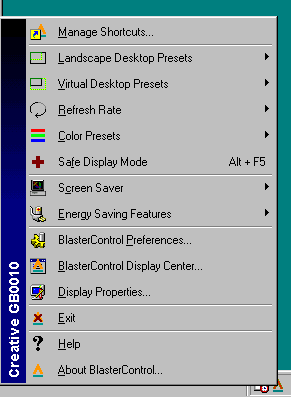
The taskbar resident utility provided access to common features.
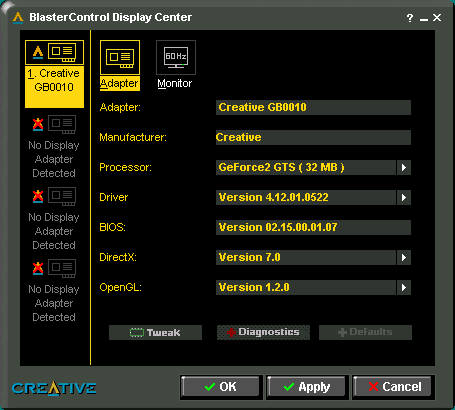
The main screen of the Blaster Control proved to be a bit confusing. Clicking
on the "Tweak" button revealed the features we were used to seeing.
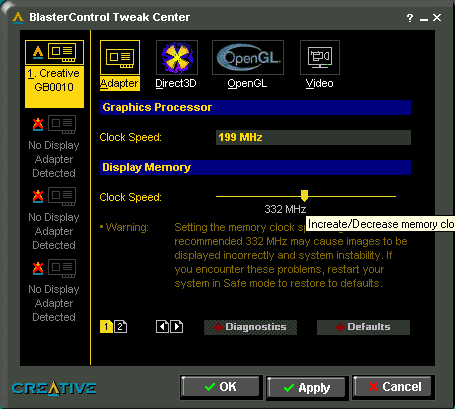
The Blaster Control program provided a similar overclocking too to the FastTrax
drivers, just with a different interface.
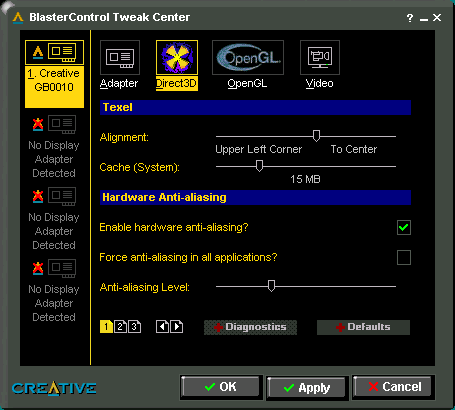
The D3D screen, with additional options on screens 2 and 3, selected by choosing
the page symbol at the bottom left.
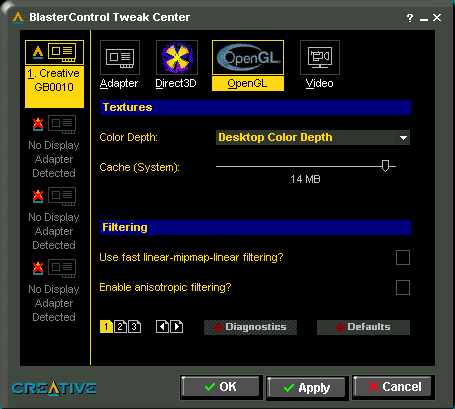
The OpenGL screen provided all standard features.
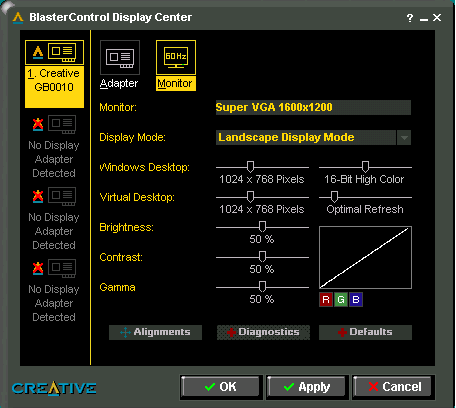
The monitor tab revealed a virtual desktop as well as color correcting.
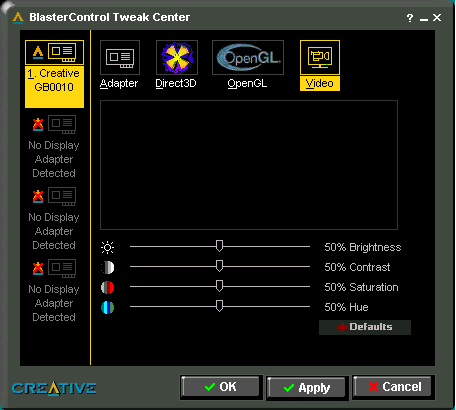
The video screen allows for tweaking of video playback colors.
The Test
|
Windows 98 SE Test System |
|||||||
|
Hardware |
|||||||
| CPU(s) | AMD Athlon (K75) 750 | ||||||
| Motherboard(s) | ASUS K7V-RM | ||||||
| Memory | 128MB PC133 Corsair SDRAM (Micron -7E Chips) | ||||||
| Hard Drive |
IBM Deskstar DPTA-372050 20.5GB 7200 RPM Ultra ATA 66 |
||||||
| CDROM |
Phillips 48X |
||||||
| Video Card(s) |
ELSA
GLADIAC ULTRA 64MB DDR clocked at 250/230 DDR ATI
Radeon 64MB DDR |
||||||
| Ethernet |
Linksys LNE100TX 100Mbit PCI Ethernet Adapter |
||||||
|
Software |
|||||||
|
Operating System |
Windows 98 SE |
||||||
| Video Drivers |
|
||||||
|
Benchmarking Applications |
|||||||
| Gaming |
idSoftware
Quake III Arena demo001.dm3 |
||||||

The Annihilator2 Ultra seems to be just a tad faster than the GLADIAC ULTRA which is a bit odd. While the difference isn't noticeable during normal gameplay it is definitely larger than normal variations in tests, maybe Creative Labs' rigorous testing procedure yielded some pretty decent results.

Once again, we see a very small lead for the Annihilator2 although it's pretty much the same card as the ELSA. Nothing to get too worked up about though.

And finally, as fill rate limitations begin to kick in, the two Ultra cards settle in at just under 60 fps at 1600 x 1200 x 32. For more Quake III Arena benchmarks read our GeForce2 Ultra Review.



For more UnrealTournament benchmarks read our GeForce2 Ultra Review.
Conclusion
If you're definitely in the market for a GeForce2 Ultra, Creative Labs will probably be your best overall bet with the Annihilator2 Ultra. The reasons for this include a lower overall price than most of the competition because of Creative's ability to outship a lot of the other manufacturers as well as the fact that the Annihilator2 Ultra does not come with many amenities like 3D glasses or TV-input/output features. The Annihilator2 Ultra will also carry the quality assurance and support of a large company such as Creative Labs, which can come in handy at times, but those times are usually few and far between.
As we've said countless times before, recommending the Ultra as a solution is very difficult now with much more powerful entries on the way, but if you want the absolute fastest available today then you don't have to look any further, and Creative Labs is a fine company to bring you that level of performance with their Annihilator2 Ultra.
How it Rates
|
AnandTech Video Card Rating |
|
|
Rating
(x/10)
|
|
|
Performance
|
6.0
|
|
Price
|
5.5
|
|
Drivers
|
7.5
|
|
Features
|
3.5
|
|
Retail Availability
|
8.5
|
|
Documentation & Software Bundle
|
5.0
|
| Overall Rating - Not an Average (Click Here to find out why) |
7.5
|

